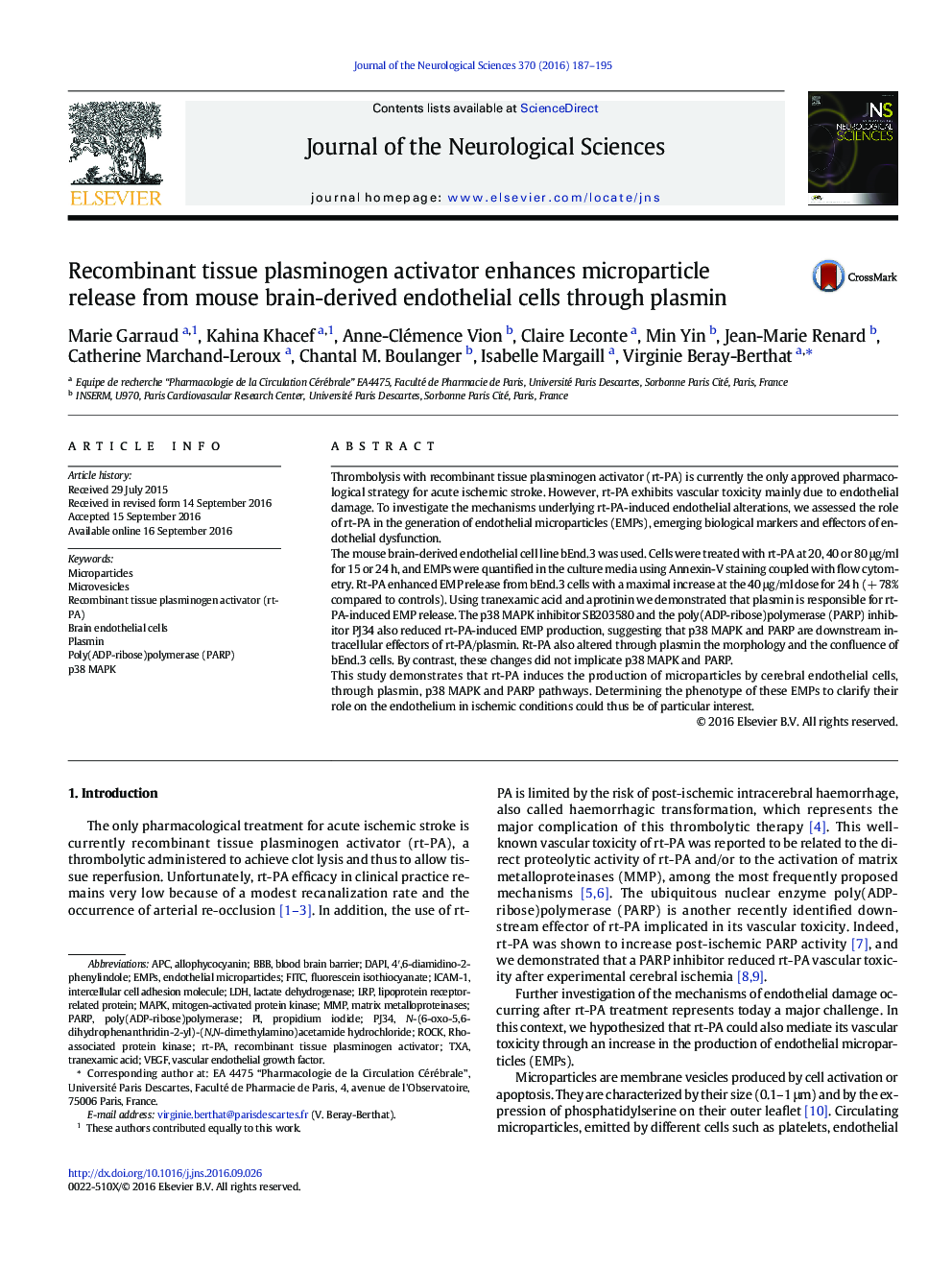| Article ID | Journal | Published Year | Pages | File Type |
|---|---|---|---|---|
| 5503135 | Journal of the Neurological Sciences | 2016 | 9 Pages |
Abstract
This study demonstrates that rt-PA induces the production of microparticles by cerebral endothelial cells, through plasmin, p38 MAPK and PARP pathways. Determining the phenotype of these EMPs to clarify their role on the endothelium in ischemic conditions could thus be of particular interest.
Keywords
MMPAPCDAPIPARPICAM-1LRPMicrovesiclesFITCTXAPJ34recombinant tissue plasminogen activator (rt-PA)Poly(ADP-ribose)polymerase (PARP)4′,6-diamidino-2-phenylindoleMAPKp38 MAPKrt-PAallophycocyaninTranexamic acidEMPsMicroparticlesendothelial microparticlesblood brain barrierBBBbrain endothelial cellsVascular endothelial growth factorVascular Endothelial Growth Factor (VEGF)Recombinant tissue plasminogen activatorfluorescein isothiocyanatelactate dehydrogenaseLDHMatrix metalloproteinasesIntercellular cell adhesion moleculeLipoprotein receptor-related proteinmitogen-activated protein kinaseRho-associated protein kinasePropidium iodidePlasminpoly(ADP-ribose)polymeraseRock
Related Topics
Life Sciences
Biochemistry, Genetics and Molecular Biology
Ageing
Authors
Marie Garraud, Kahina Khacef, Anne-Clémence Vion, Claire Leconte, Min Yin, Jean-Marie Renard, Catherine Marchand-Leroux, Chantal M. Boulanger, Isabelle Margaill, Virginie Beray-Berthat,
